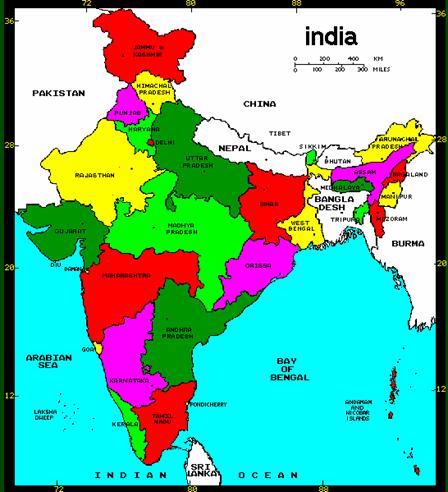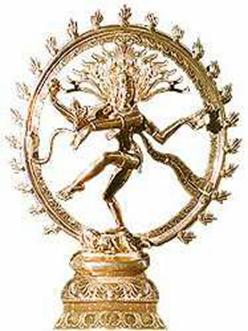The old Indian civilization
The old Indian civilization
Plan:
1. The “unknown land” of Asia – India.
2. Early Indian Civilization.
3. Key Features of Indian Society.
4. Religion and the Indian way of life.
5. Lack of Political Unity.
6. India’s literature represented by Mahabharata and Ramayana.
7. Customs in India – the practice of self-immolation by fire.
8. The role of muslims in India’s life.
9. Taj Mahal.
10. Art of India.
The “unknown lands” of Asia and Africa have fascinated Westerners for centuries. The Orient, with her silks and her unique cultures, has attracted travelers since early days. Despite the contacts, between Asia and Africa remained virtually unaffected by Western influences until the twentieth century.
 India is a land of great diversity, in its topography (the physical features of a land), climate, and population, it is a study in contrasts. This triangular subcontinent extends from southern Asia into the Indian Ocean, forming a giant Pennsylvania. It’s terrain varies from subtropical rain forest to barren deserts, from low coastal plains to the highest mountain range in the world, the Himalayas. Between the rugged mountain regions in the north and the coastal plains and tropical plateaus of the south lie fertile valleys watered by two great river systems, the Indus and the Ganges. Like the Mesopotamian and Egyptian cultures, the earliest Indian civilization began along riverbanks. The first inhabitants of India settled in river valleys along the Indus and Ganges rivers. India is a land of great diversity, in its topography (the physical features of a land), climate, and population, it is a study in contrasts. This triangular subcontinent extends from southern Asia into the Indian Ocean, forming a giant Pennsylvania. It’s terrain varies from subtropical rain forest to barren deserts, from low coastal plains to the highest mountain range in the world, the Himalayas. Between the rugged mountain regions in the north and the coastal plains and tropical plateaus of the south lie fertile valleys watered by two great river systems, the Indus and the Ganges. Like the Mesopotamian and Egyptian cultures, the earliest Indian civilization began along riverbanks. The first inhabitants of India settled in river valleys along the Indus and Ganges rivers.
These people must have felt secure from invaders and foreign influences. They were protected by tall mountain ranges in the north and by seas on the east and west. But despite these natural barriers, India did not remain an isolated land.
Throughout her history, merchants, foreign invaders and Wandering tribes crossed the mountains along India’s northwestern border and settled in the fertile river valleys. As a result, India became a land of diverse elements. Within Indian Society, a unique culture developed. Early Indian Civilization
 India derives its name from the Indus River, along whose fertile banks the earliest Indian civilization flourished (ca 2300 BC). Much of our limited knowledge of this civilization has come from excavations of two of its leading cities: Mohenjo – Daro and Harappa. These carefully planned cities had wide, straight streets lined with brick houses. Evidence indicates that, these cities had elaborate drainage and sewer systems, which were more advanced than those in most, modern Indian Villages. India derives its name from the Indus River, along whose fertile banks the earliest Indian civilization flourished (ca 2300 BC). Much of our limited knowledge of this civilization has come from excavations of two of its leading cities: Mohenjo – Daro and Harappa. These carefully planned cities had wide, straight streets lined with brick houses. Evidence indicates that, these cities had elaborate drainage and sewer systems, which were more advanced than those in most, modern Indian Villages.
Although a great distance separates India and the Near East, the early inhabitants of India carried on trade with Egypt and Mesopotamia. From archeological evidence it is known that the Indus civilization ended suddenly – perhaps by flood on by enemy invasion. It was at this time that a warlike people called the Aryans migrated into the Indus Valley.
The Aryans were a fair-skinned people who came from central Asia sometime after 1500 BC and subdued the non Aryan people of northwest India. Many historians believe that the Aryans were related to tribes that were invading the Near East Greece and Rome about the same time. The Aryans were herdsmen; they kept large numbers of cows and horses. Although they left behind no cities as the Indus civilization did, they did establish a new language in India – Sanskrit.
Our knowledge of the Aryans and their influence on Indian society comes not from archaeology, but from a collection of religious literature known as the Vedas, meaning “knowledge”. Preserved in the Vedas are early traditions and religious beliefs of the Indians, which were passed down orally from one generation to the next. From Sanskrit literature, we gain insights into the Aryan way of life, which became the basis of Indian culture and tradition.
Key Features of Indian Society
India has one of the oldest cultures in the modern world. The basic characteristics of Indian society, described in the Vedas, have changed little from ancient to modern days.
Joint-Family
The family has always been one of the most important social units in India. The extended or Joint-Family included the children, grandchildren wives, and close blood relatives of a common ancestor. The oldest male of the group was the dominant authority over the family. When married, sons did not establish their own homes; instead they remained in their father’s or grandfather’s household. Each family member had his own duties and obligations. The interests of the family came before those of the individual family members.
Parents chose the husbands or wives for their children in order to maintain the family’s position and honor in society.
Caste
Imagine living in a country in which your status in life was determined the moment you were born. India was such a country. Her population was divided into rigid social groups called castes. The Indians formulated strict rules governing the life of the members of each caste group: where they lived, what they did (profession), what they wore, what and with whom they could eat, as well as, whom they could marry.
India had between two and three thousand different castes and subcastes. Each one fell into one of four broad “class” groups. The most important group was the priests, called the Brahmans.
Next in rank were the rulers, and warriors, followed by the merchants and traders. The lowest class group was the sudras – composed of servants and serfs. Outside the caste system and at the bottom of the Indian social ladder were the outcastes, or “untouchables”, for mere contact with them was thought to bring defilement. While anyone could improve his status within his caste system there was little change in the village and family life of India.
This fact explains in part why Indian society remained nearly the same for thousands of years.
Religion and the Indian Way of Life
Religion has played a dominant role in shaping Indian culture. From India came two pagan religions that have had a major impact on Asian culture: Hinduism and Buddhism.
Hinduism
Hinduism is ingrained in the Indian way of life. It developed from the early culture and traditions of India: her social structure, literature, arts and customs. It has not only preserved the traditional elements of Indian’s past but also served as a unifying influence in India’s diverse society.
Because Hinduism has no formal statement of doctrine, it was able to absorb into its system of belief a wide variety of gods and religious concepts found among the many of the people of India. The majority of people in India are Hindus.
The basic tenets of Hinduism are found in the religions literature of ancient India, namely the Vedas and the Upanishads. Hindus believe that a great god called Brahman permeates everything in the universe. The Hindus acknowledge many gods; all deities, however, are considered only manifestations of the eternal, unchanging Brahman .
Since Brahman is not a personal being, he is often referred to as the great soul or world soul. The ultimate purpose and goal of man according to the Vedas, is to reunite his soul with the world soul. This reunification is accomplished through the process of reincarnation, in which a man’s soul passes through many states (or rebirths) before it escapes the physical world and unites with Brahman. This cycle of rebirths is called the wheel of life.
The Hindu believes that a person’s deeds in this life determine his status in the next. If he has lived a good life, then he will move to a higher caste in the next life. The soul of an evil person may be reborn into a lower caste or even into some form of animal life. By observing the religious ritual and ceremonies prescribed by the Hindu priests and by fulfilling the duties and obligations of his caste a Hindu believes that he can ultimately gain release from the “wheel of life” and attain union with the world soul.
|